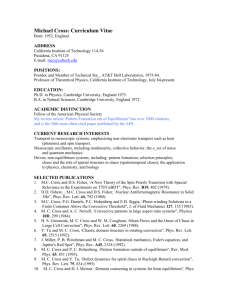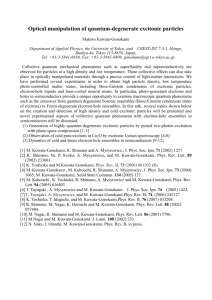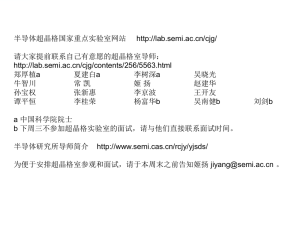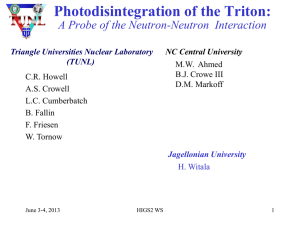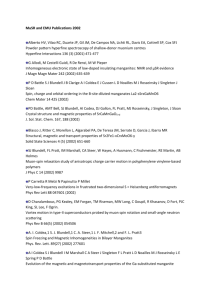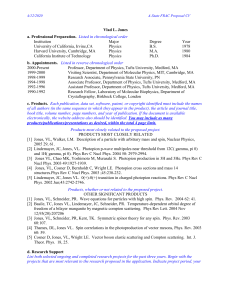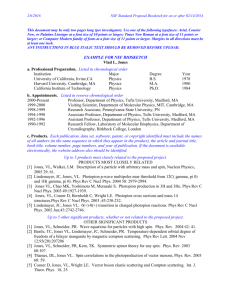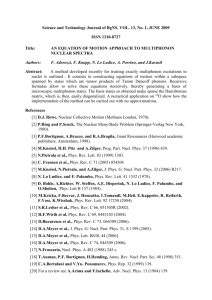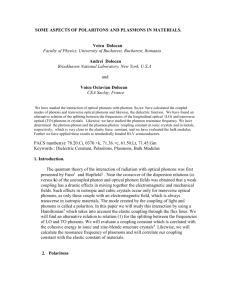Science and Technology Journal of BgNS, VOL. 13, No. 1, JUNE
advertisement
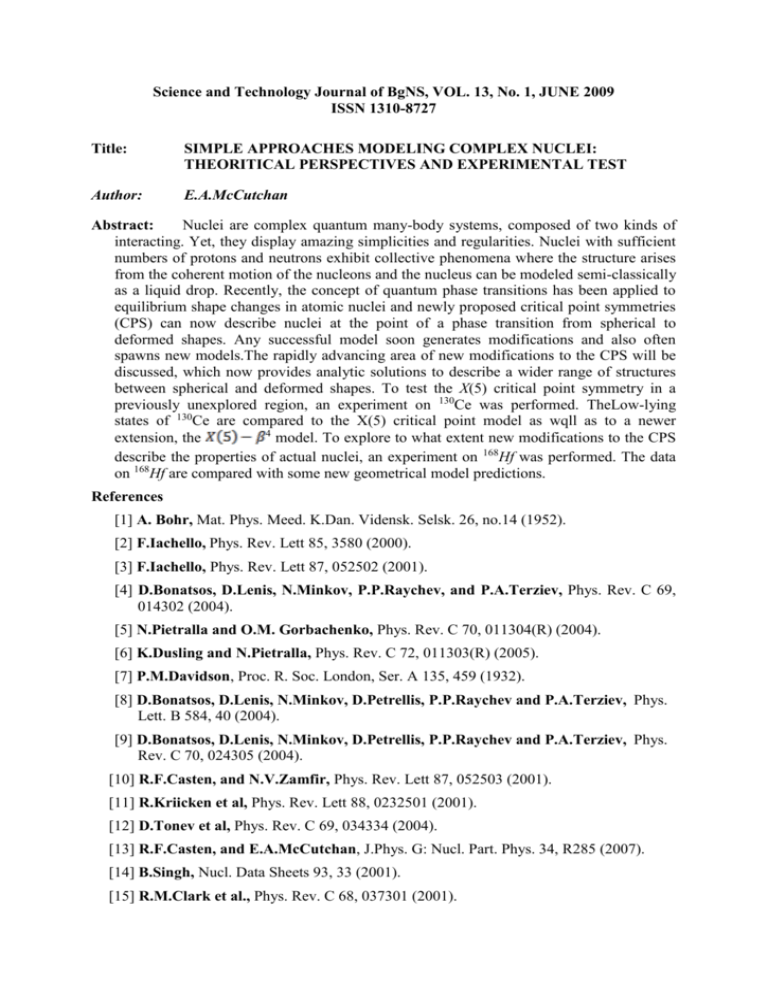
Science and Technology Journal of BgNS, VOL. 13, No. 1, JUNE 2009 ISSN 1310-8727 Title: SIMPLE APPROACHES MODELING COMPLEX NUCLEI: THEORITICAL PERSPECTIVES AND EXPERIMENTAL TEST Author: E.A.McCutchan Abstract: Nuclei are complex quantum many-body systems, composed of two kinds of interacting. Yet, they display amazing simplicities and regularities. Nuclei with sufficient numbers of protons and neutrons exhibit collective phenomena where the structure arises from the coherent motion of the nucleons and the nucleus can be modeled semi-classically as a liquid drop. Recently, the concept of quantum phase transitions has been applied to equilibrium shape changes in atomic nuclei and newly proposed critical point symmetries (CPS) can now describe nuclei at the point of a phase transition from spherical to deformed shapes. Any successful model soon generates modifications and also often spawns new models.The rapidly advancing area of new modifications to the CPS will be discussed, which now provides analytic solutions to describe a wider range of structures between spherical and deformed shapes. To test the X(5) critical point symmetry in a previously unexplored region, an experiment on 130Ce was performed. TheLow-lying states of 130Ce are compared to the X(5) critical point model as wqll as to a newer 4 extension, the model. To explore to what extent new modifications to the CPS describe the properties of actual nuclei, an experiment on 168Hf was performed. The data on 168Hf are compared with some new geometrical model predictions. References [1] A. Bohr, Mat. Phys. Meed. K.Dan. Vidensk. Selsk. 26, no.14 (1952). [2] F.Iachello, Phys. Rev. Lett 85, 3580 (2000). [3] F.Iachello, Phys. Rev. Lett 87, 052502 (2001). [4] D.Bonatsos, D.Lenis, N.Minkov, P.P.Raychev, and P.A.Terziev, Phys. Rev. C 69, 014302 (2004). [5] N.Pietralla and O.M. Gorbachenko, Phys. Rev. C 70, 011304(R) (2004). [6] K.Dusling and N.Pietralla, Phys. Rev. C 72, 011303(R) (2005). [7] P.M.Davidson, Proc. R. Soc. London, Ser. A 135, 459 (1932). [8] D.Bonatsos, D.Lenis, N.Minkov, D.Petrellis, P.P.Raychev and P.A.Terziev, Phys. Lett. B 584, 40 (2004). [9] D.Bonatsos, D.Lenis, N.Minkov, D.Petrellis, P.P.Raychev and P.A.Terziev, Phys. Rev. C 70, 024305 (2004). [10] R.F.Casten, and N.V.Zamfir, Phys. Rev. Lett 87, 052503 (2001). [11] R.Kriicken et al, Phys. Rev. Lett 88, 0232501 (2001). [12] D.Tonev et al, Phys. Rev. C 69, 034334 (2004). [13] R.F.Casten, and E.A.McCutchan, J.Phys. G: Nucl. Part. Phys. 34, R285 (2007). [14] B.Singh, Nucl. Data Sheets 93, 33 (2001). [15] R.M.Clark et al., Phys. Rev. C 68, 037301 (2001). [16] N.V.Zamfir, and R.F.Casten, J.Res Natl. Inst. Stand. Technol. 105, 147 (2000). [17] A.F. Mertz (private communication) [18] A.Gizon, J.Genevey, C.F.Laing, P.Paris, D.Barneoud, J.Inchaouh, I.Penev, A.Polchocki, Eur. Phys. J.A. 12, 309 (2001) [19] G.Puddu, O.Scholten and T.Otsuka, Nucl. Phys. A 348, 109 (1980). [20] R.F.Casten, P. von Brentano, Phys. Lett. B152, 22 (1985). [21] E.A.McCutchan et al., Phys. Rev. C – in press. [22] V.S.Shirley, Nucl. Data Sheets 71, 26 (1994).

